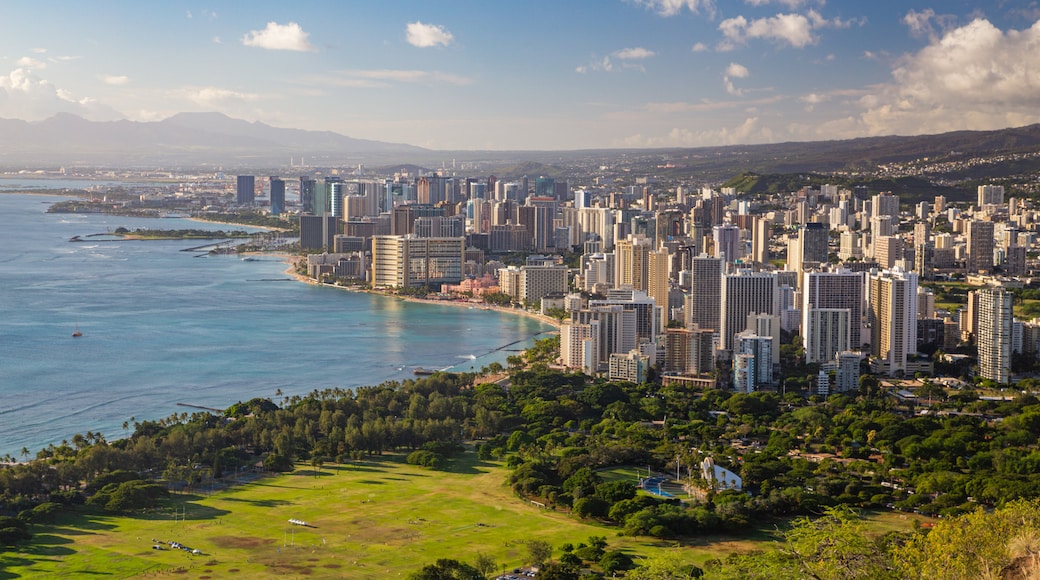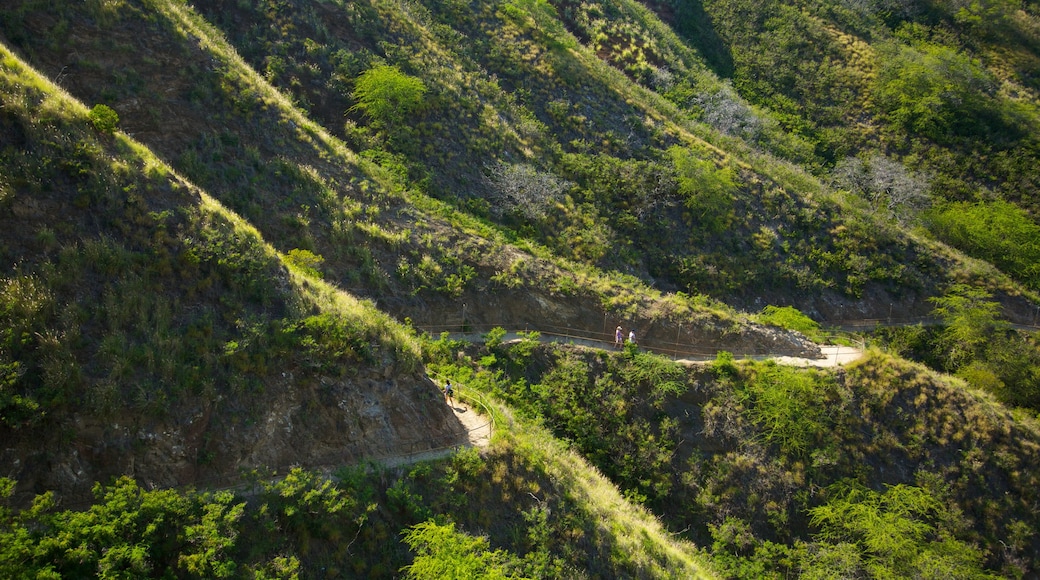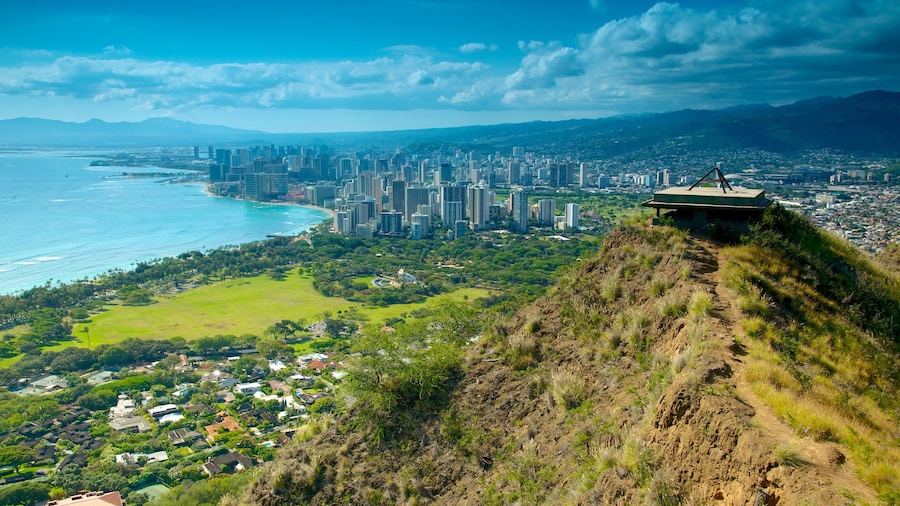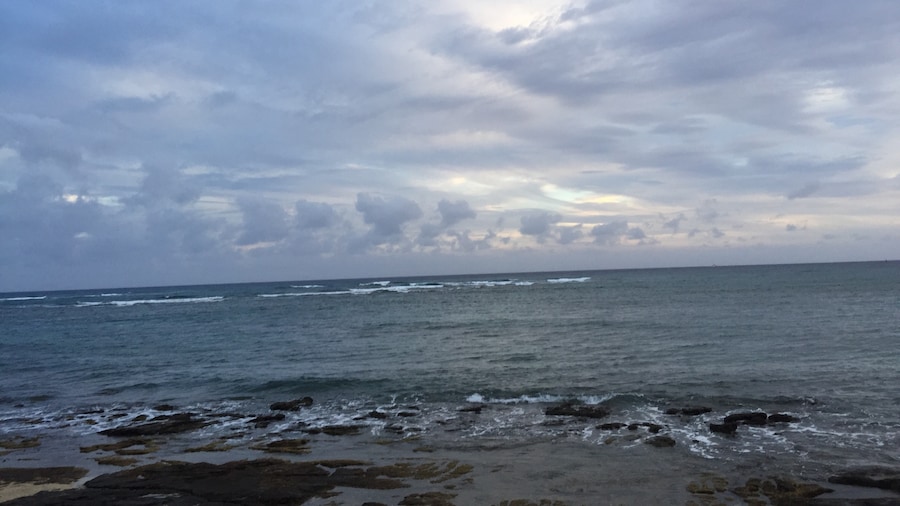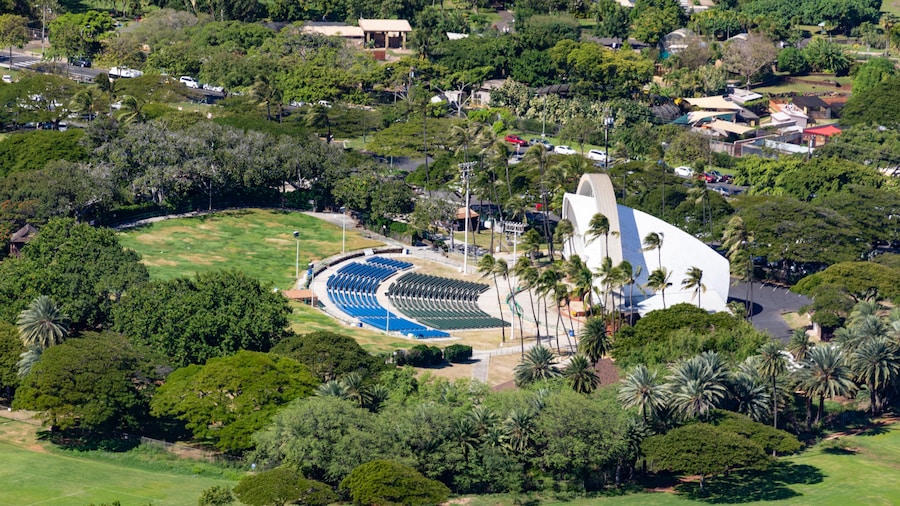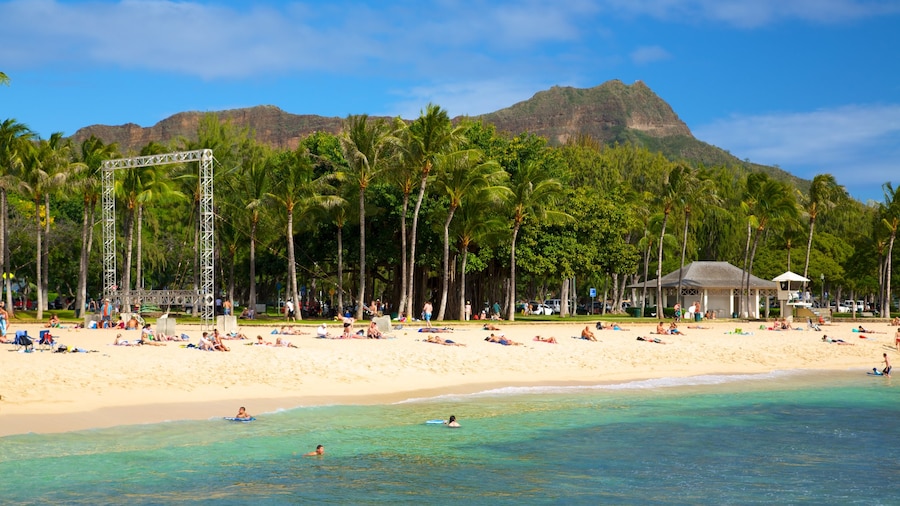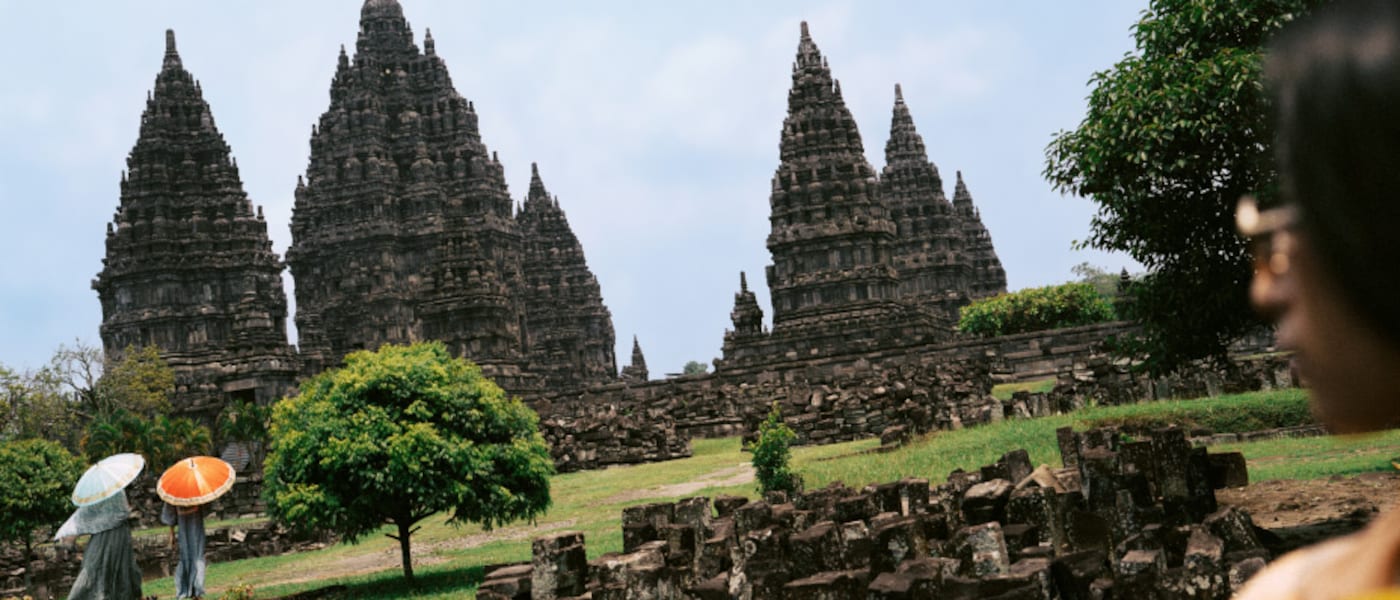Wherever you are across Honolulu, you'll be able to see the iconic, verdant slopes of Diamond Head. Take the short trail of just over a kilometre to the very top and view the town from this unique vantage point.
The locals around these parts know this spot as Le'ahi (brow of the tuna). An extinct volcanic crater, or “tuff cone”, Diamond Head was formed some 150,000 years ago after a short, intense eruption that created the circular mountain formation you can see today. Its rim is 228 metres above sea level and allows you to see the crater, which is now overgrown, as well as Oahu Island and the coastline of Honolulu.
Follow the handrails and take the time to read the information signs telling you more about the area. Keep going along an unpaved path that will take you over lava, through tunnels and up staircases before you eventually reach the observation platform. Make the most of the refreshing sea breeze as well as the captivating views of Waikiki Beach and Kapiolani Park beneath. If you visit during the winter, you may even get to see the breaching humpback whales migrating past.
Spanning nearly 475 acres, the Diamond Head State Monument area around the base of the mountain is a great place to sit and enjoy a picnic. Or you can find something to eat on Monsarrat Avenue close to the entrance. If you are here on a Saturday morning, you can enjoy some of the fresh produce on offer at the local farmers' market.
The Diamond Head trail begins near the entrance to the Diamond Head State Monument, which you'll find on the coast to the east of Waikiki. You can reach the park on foot, by bus or by car, and it is open from early in the morning to late in the afternoon. There is, however, a small fee to enter. Though the climb is not a long one, it is steep and will take you over unpaved spots, so good walking shoes are essential, as are water, sun protection and a torch for the tunnels.
